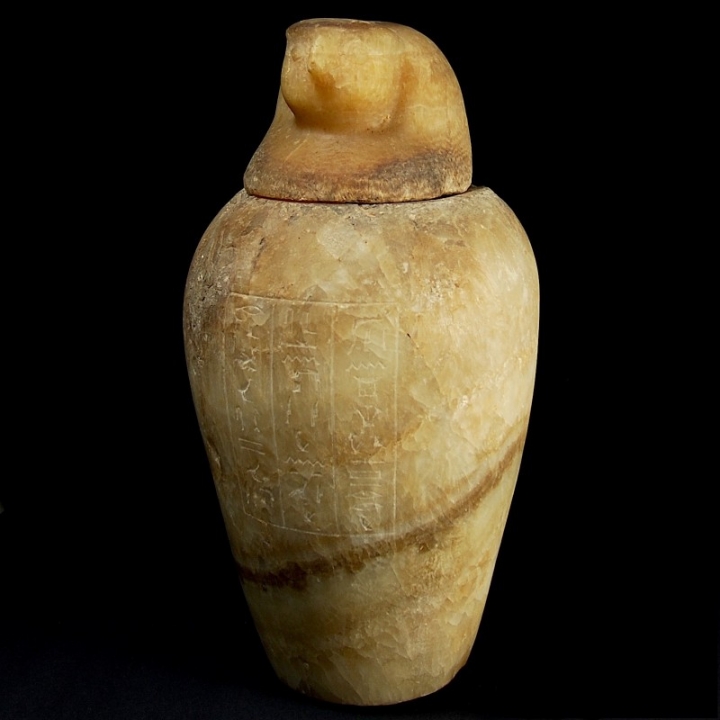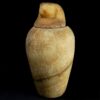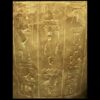Alabaster Canopic Jar
Culture: Egpytian
Period: 26th dynasty, 664-525 B.C.
Material: Alabaster
Dimensions: 31.5 cm high
Price: Sold
Ref: 1119
Provenance: German private collection South-Baden, acquired between 1971 and 1998. Gorny&Mosch auction 19th June 2013, lot 35. Finally in a Swiss private collection.
Condition: Some minor wear on the rim, otherwise intact and of excellent quality.
Description: Alabaster canopic jar of type XIX according to Kurt Sethe with an ovoid body and flat base. The lid depicts the falcon headed Horus son Qebehsenuef, protector of the intestines. The rectangular title block with three vertical columns with finely written hieroglyphs mentions as the owner a man called Tschau-Waset ("youth from Thebes"). There are only two more times where this name is mentioned. According to the egyptologist Dr Edith Bernhauer the name could furthermore be an indication for the origin from Thebes West. The text is slightly shortened, which is not unusual for this canopic jar form. It reads: "Words spoken through Nephthys: I am hiding a secret, I am doing this (....unclear meaning) of Hapi, who is inside me. Osiris of Tschau-Waset, justified, is Hapi." Although the lid depicts, as mentioned, Horus son Qebehsenuef, the text mentions the gods Hapi and Nephthys. During the 25th and 26th dynasty this was of course not unusual. Text and lid do not necessarily need to correspond during these periods. Hapi can be mentioned, but nevertheless, like in this case, a falcon head could be the lid. Color and sinter suggest that the lid and the vessel possibly belong to each other. At least the head of Qebehsenuef originates from the same set. An impressive, heavy canopic jar. With expertise and translation from the Munich egyptologist Dr. Edith Bernhauer.






